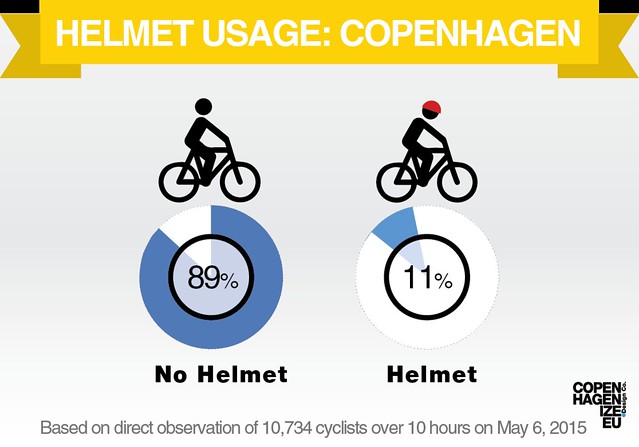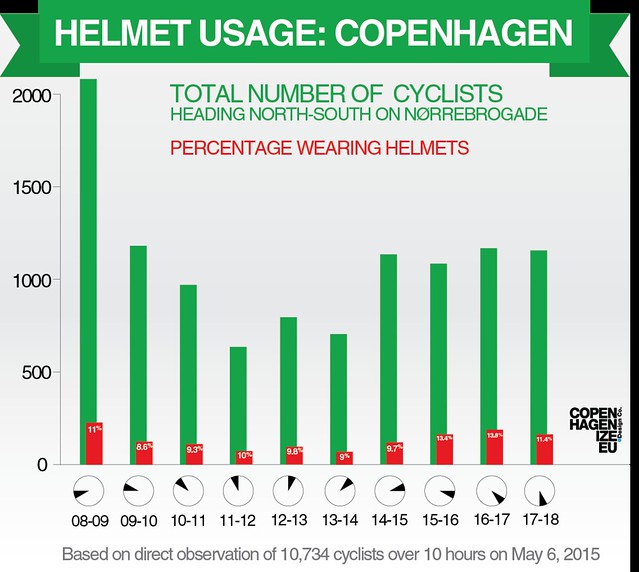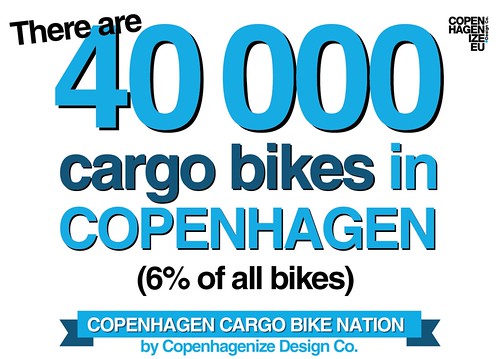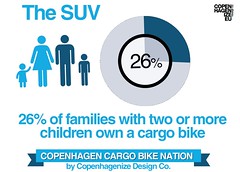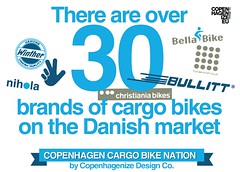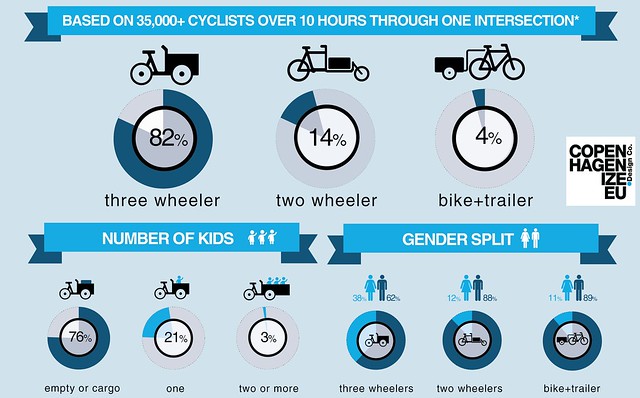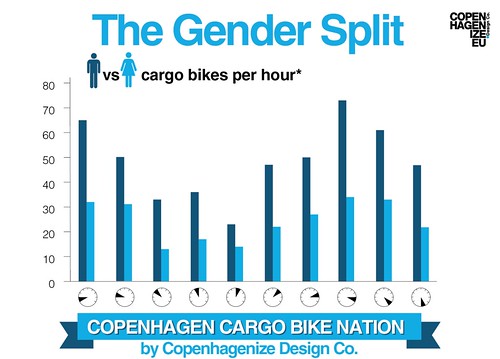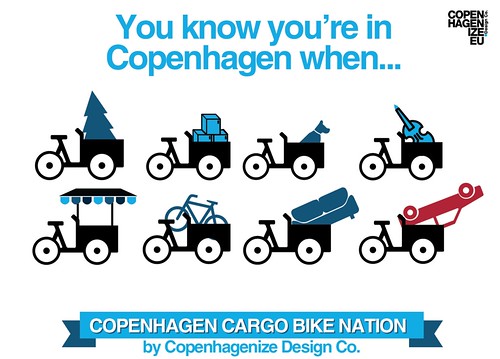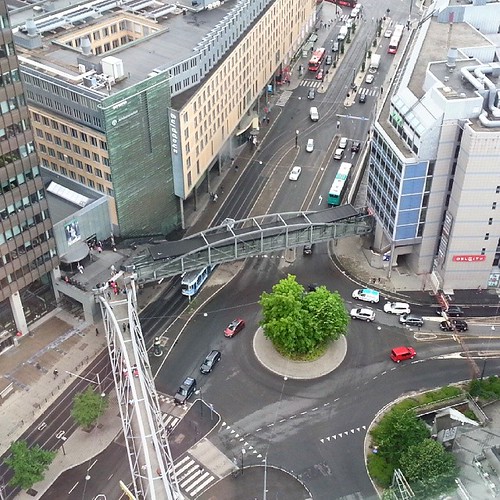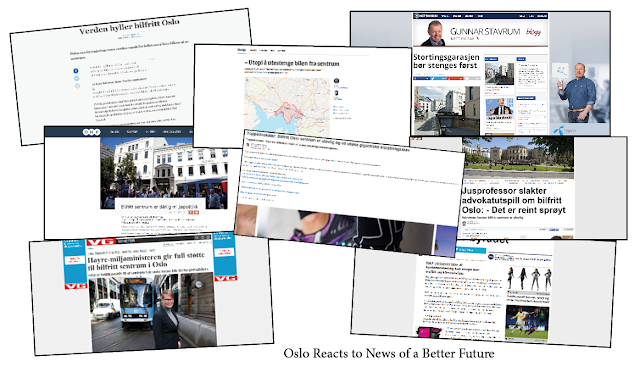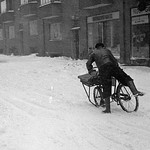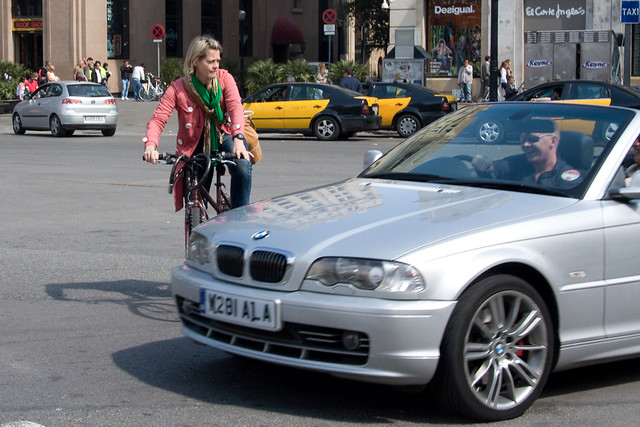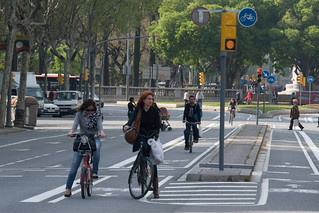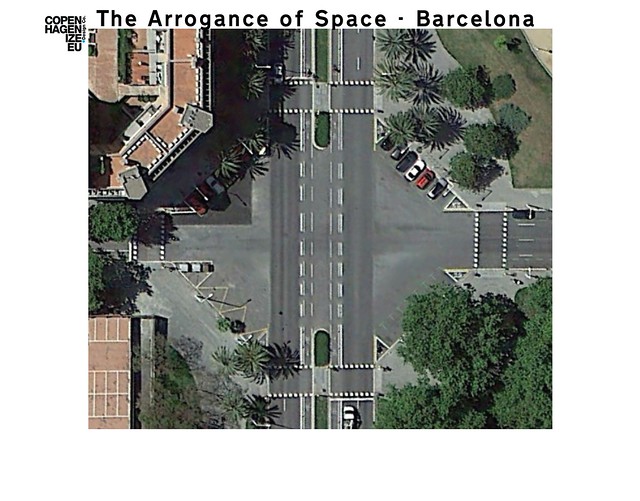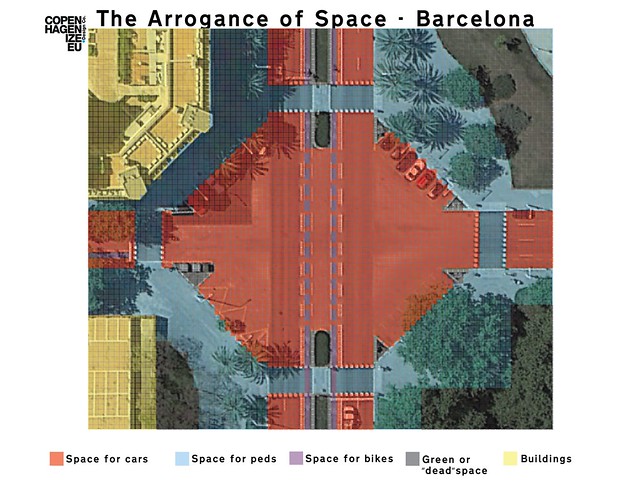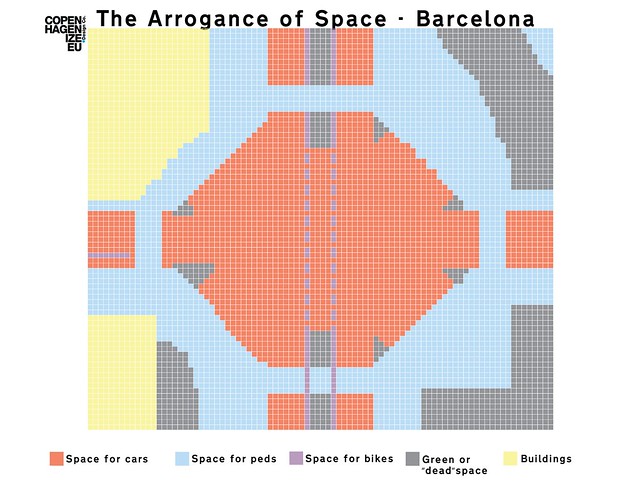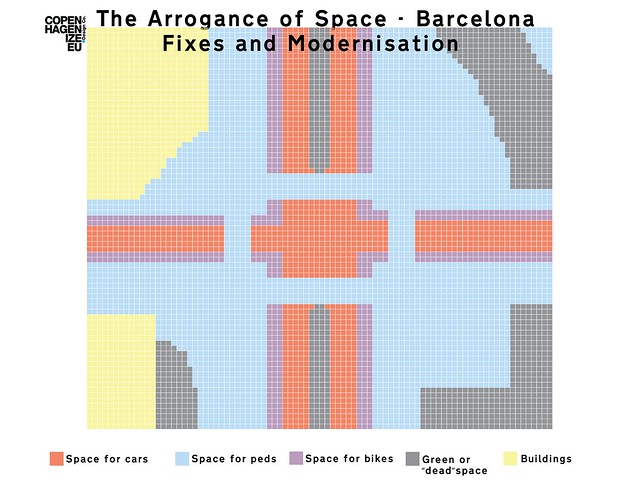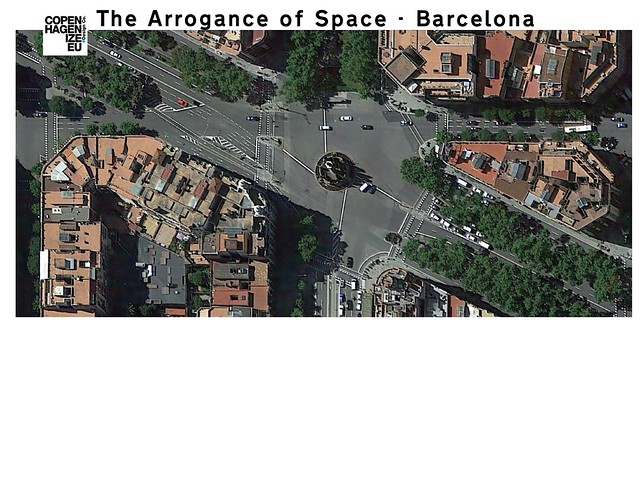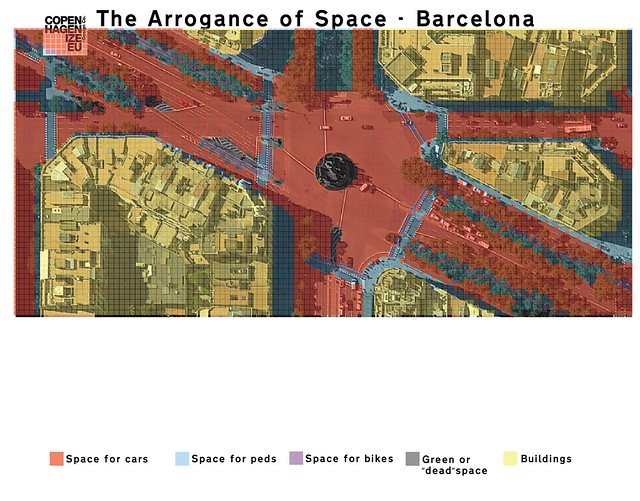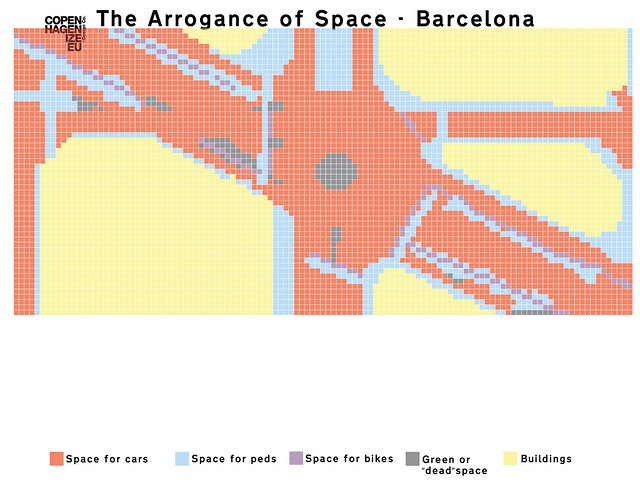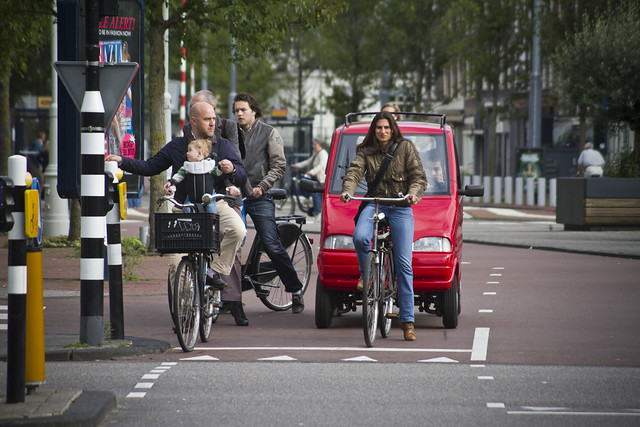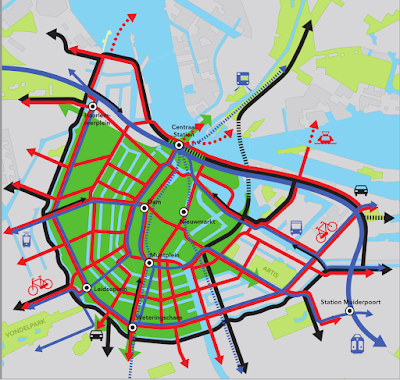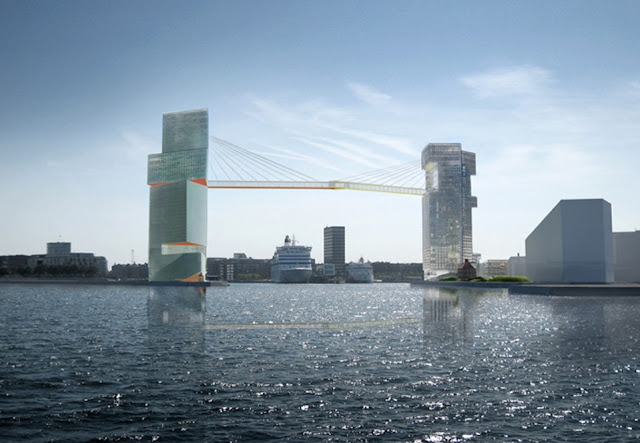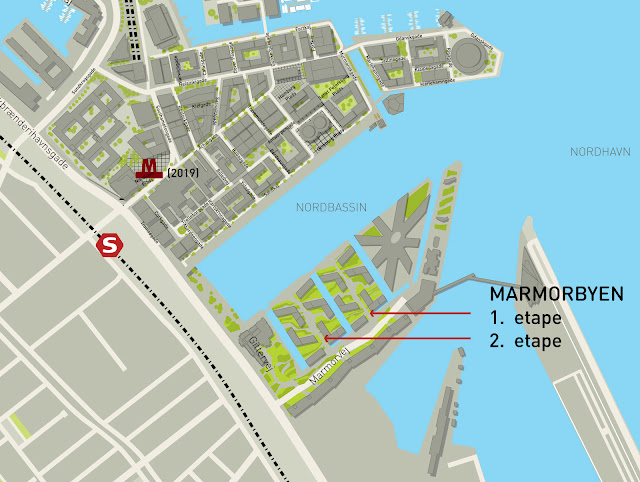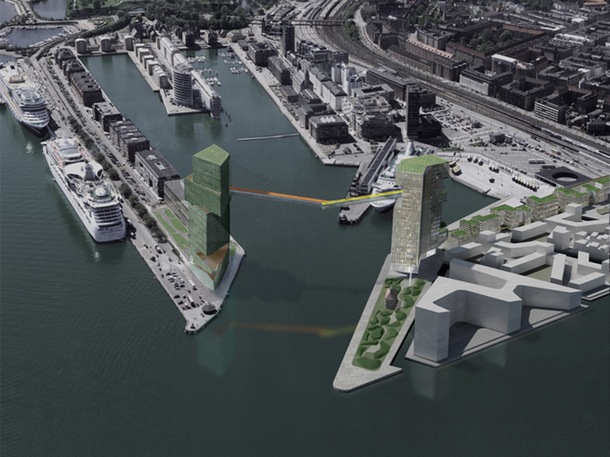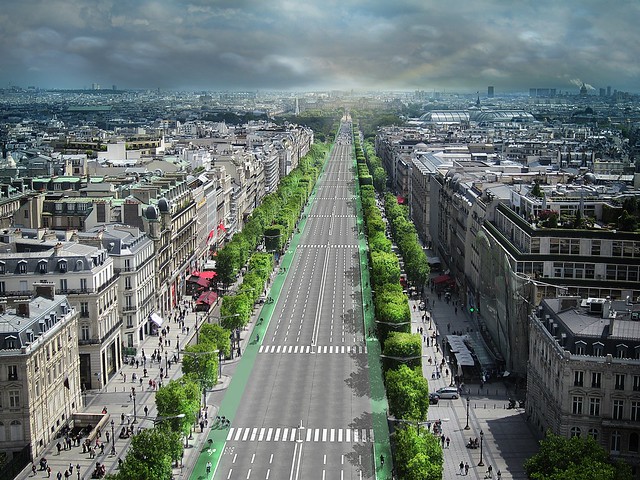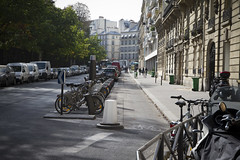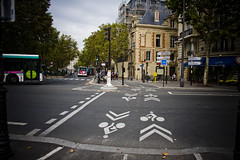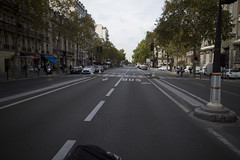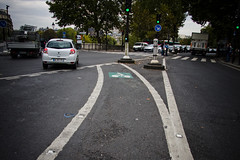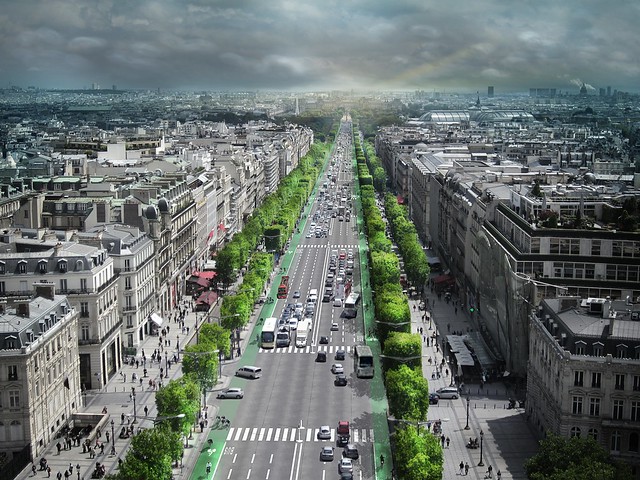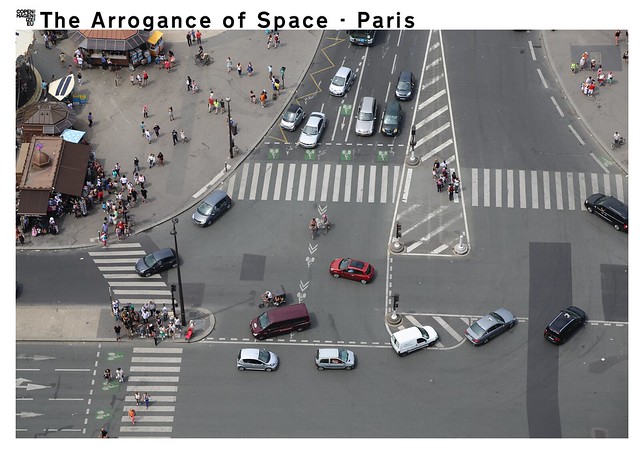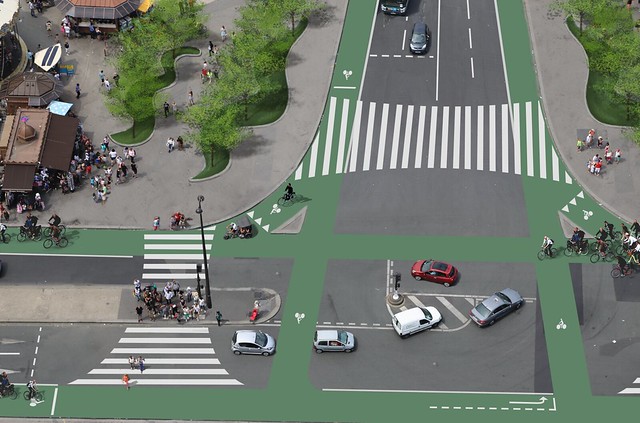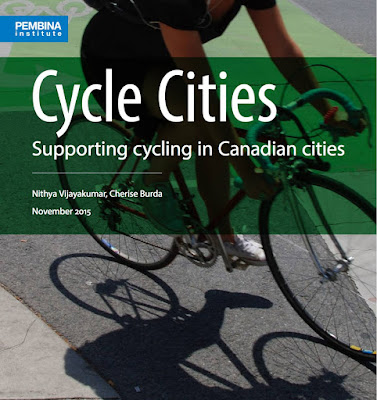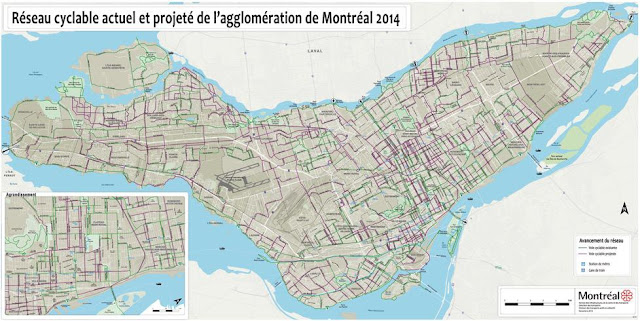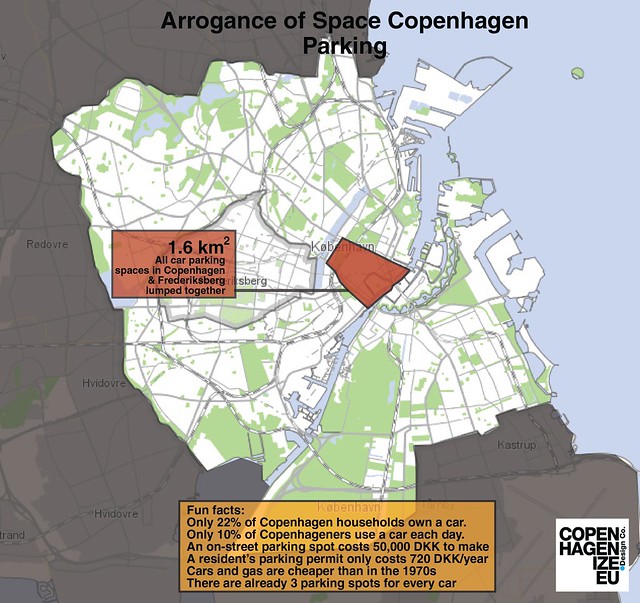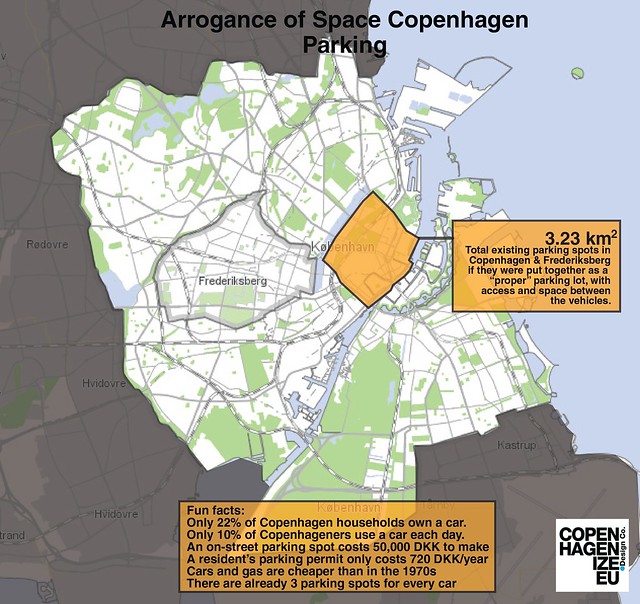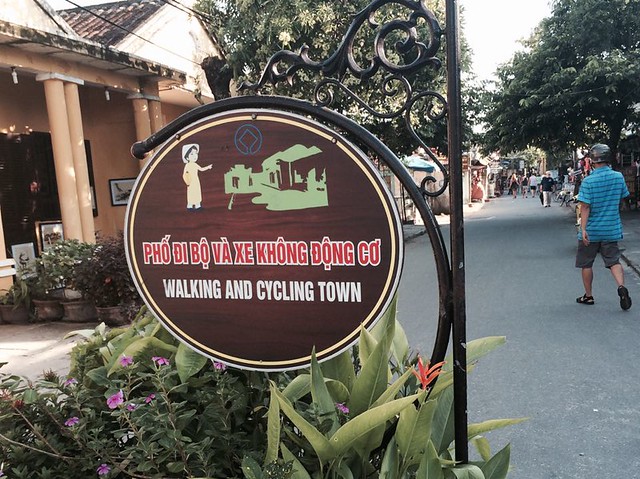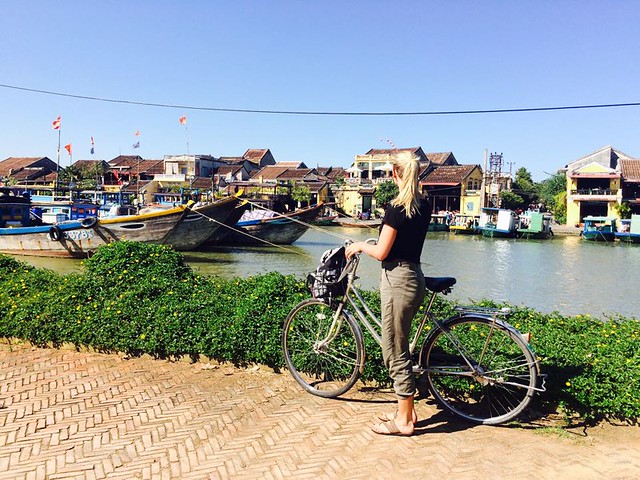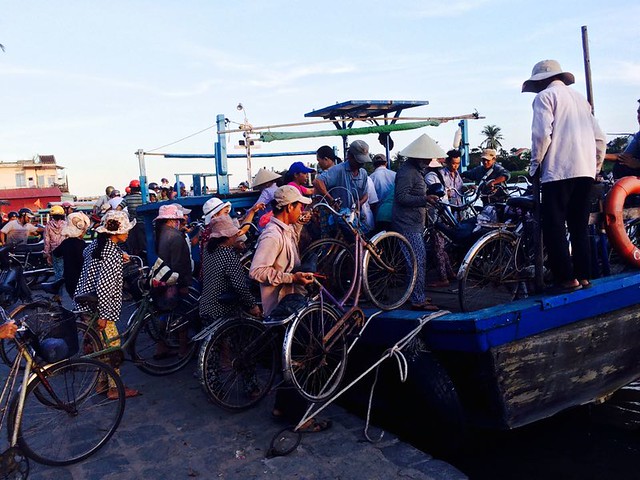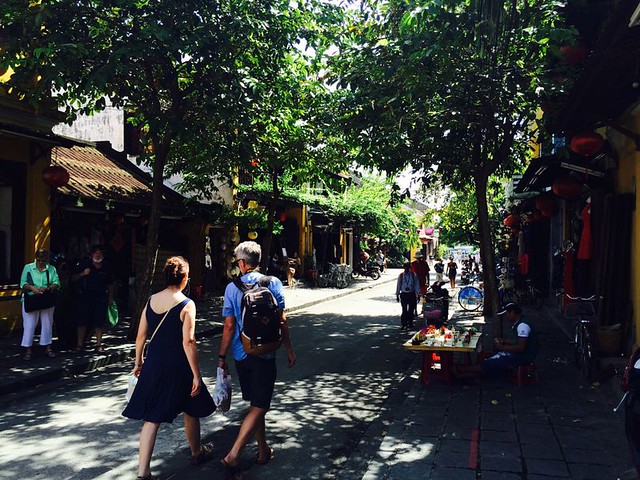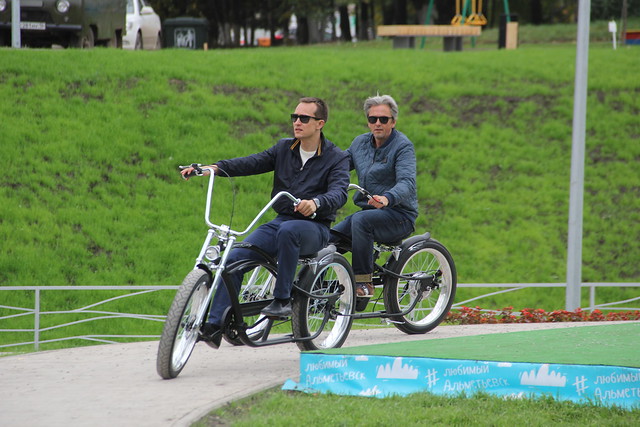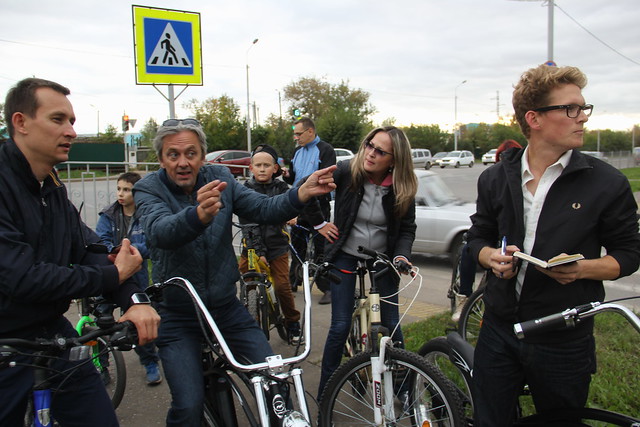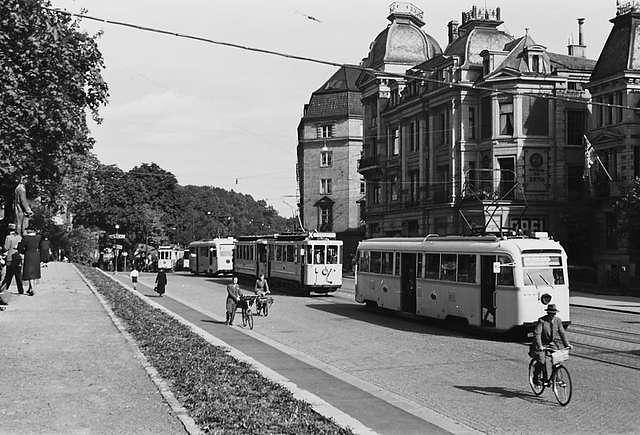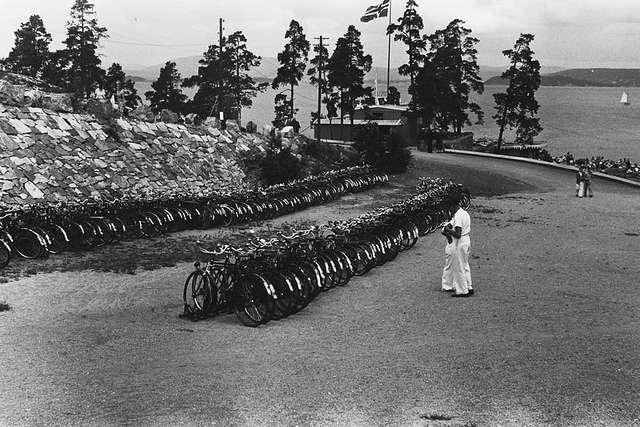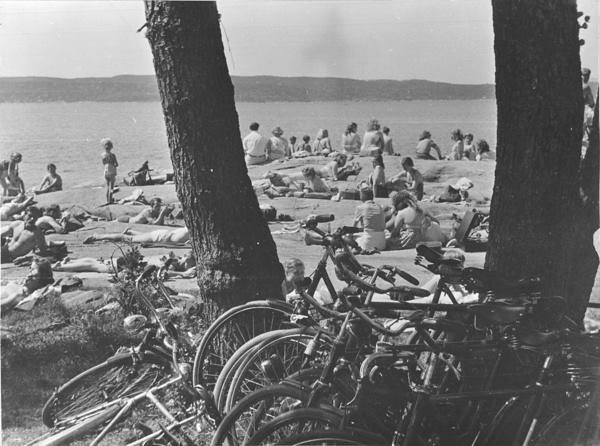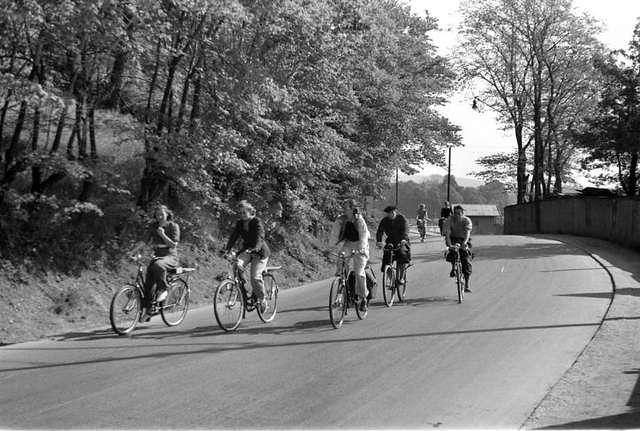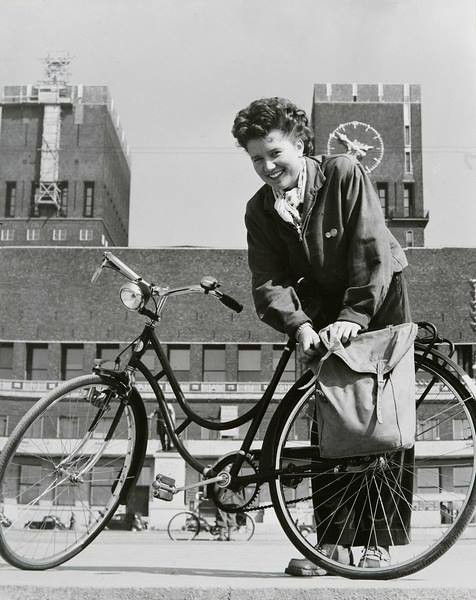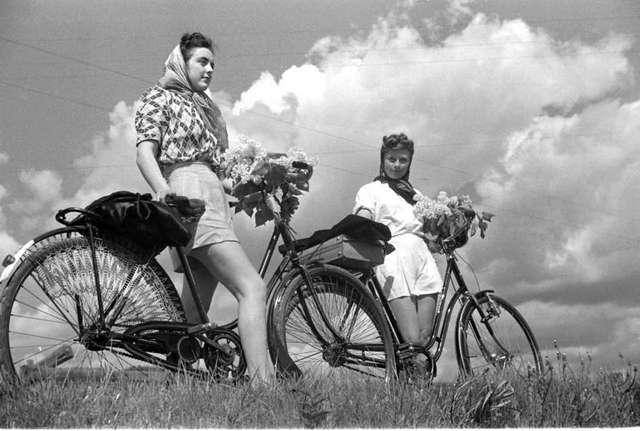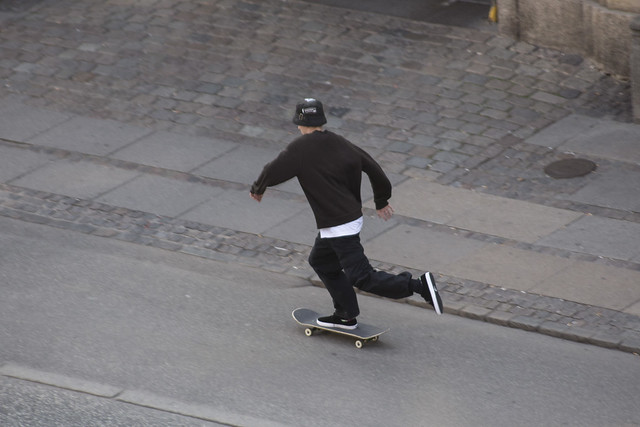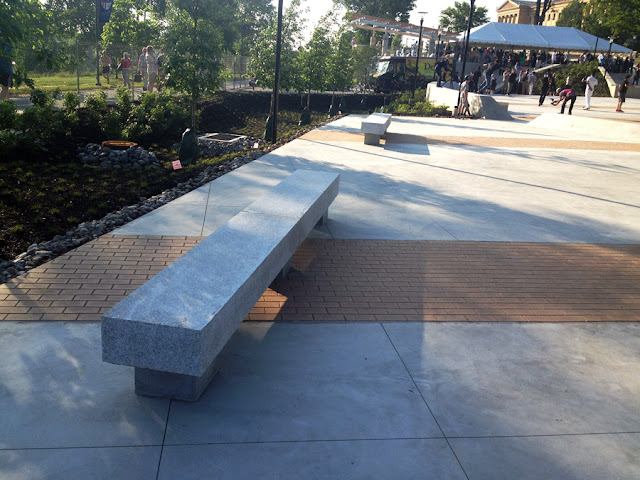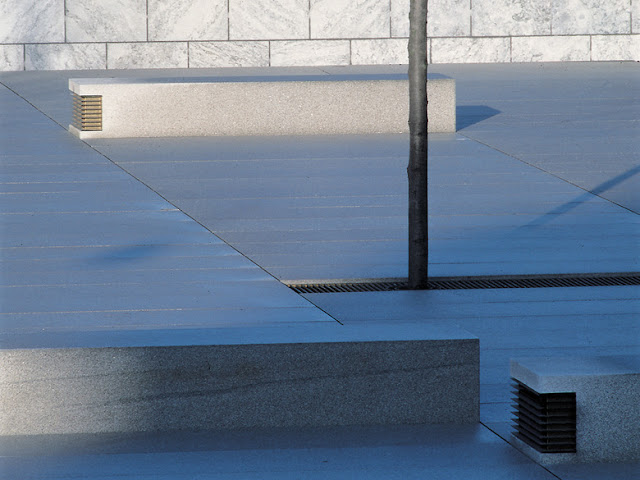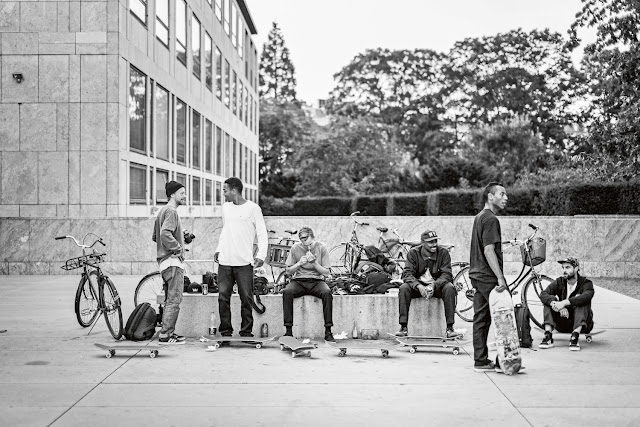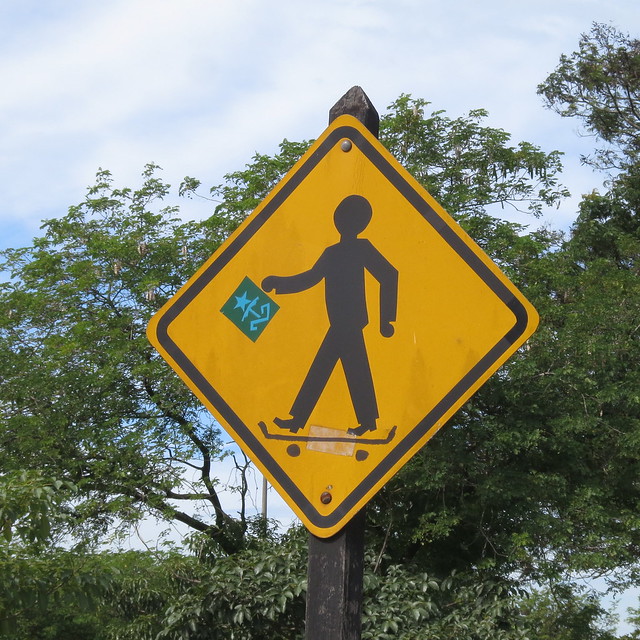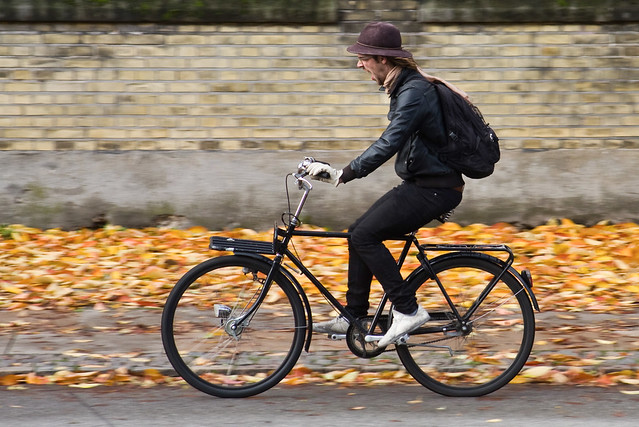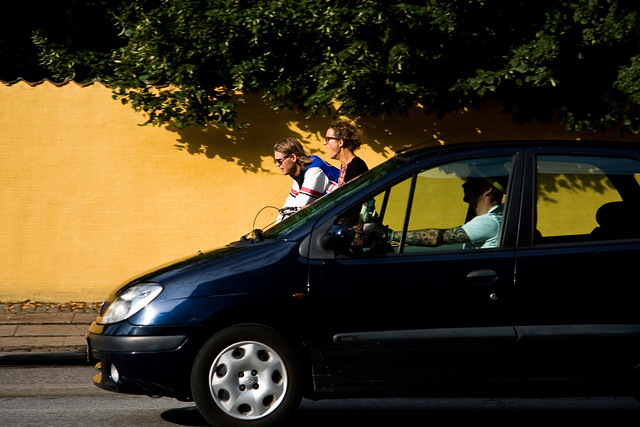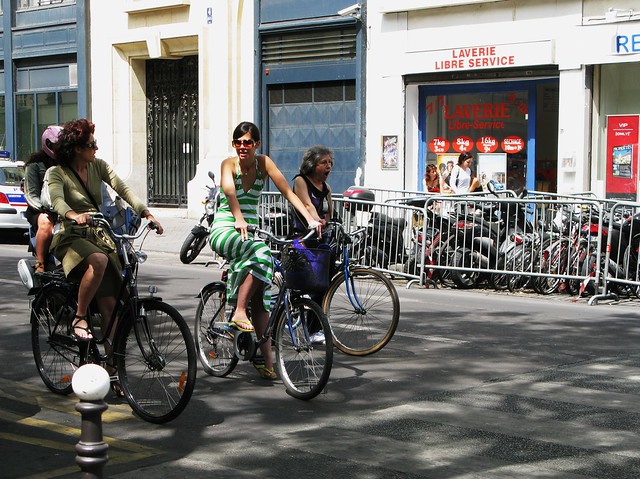![Barcelona Pity the Motorist]() Traducción española está en el fondo // Click here for English version
Traducción española está en el fondo // Click here for English version Aquesta setmana , l'alcaldessa de Barcelona, Ada Colau i la tinent d’alcaldessa de la ciutat visitaran Copenhaguen. Colau, forma part de la coalició d'esquerra alternativa " Barcelona en comú " i va ser escollida al maig de 2015.
Estem segurs que la seva visita serà una gran font d'inspiració per als barcelonins i barcelonines. Pel que fa a urbanisme i bicicleta en particular, hi ha coses específiques que han d'estudiar amb atenció i prendre nota.
Sóc un fan de Barcelona . Jo mateix he passat molt de temps a la ciutat, al menys de dues ocasions en vacances d'estiu amb els meus fills. En general vam poder pedalar al voltant de grans parts de la ciutat i sentir-nos segurs, es noten les millores en infraestructures i la pacificació del trànsit motoritzat. Veig Barcelona com una ciutat amb un enorme potencial per augmentar la quota modal dels desplaçaments en bicicleta i per maximitzar el seu roll com a líder des de 2008. Un posicionament just a The Copenhagenize Index també indica que la ciutat ha fet molt en comparació amb altres grans ciutats de tot el món. Tanmateix, hi ha molta feina per fer.
Hem parlat amb els arquitectes de l'equip de Copenhagenize Design Company a Barcelona, Jordi Galí Manuel i Maria Elisa Ojeda, sobre el que la ciutat hauria de fer en matèria ciclista i sobre la inspiració que necessita per endur-se a casa des de Copenhaguen.
Infraestructura i millors enginyers
Quelcom estrany sobre Barcelona és que, tot i que les millors pràctiques en infraestructura ciclista han estat implementades amb èxit arreu del mon des de fa al voltant d'un segle, la ciutat ha deixat als seus urbanistes i enginyers inventar-se coses. El inventar-se coses, en lloc d'utilitzar dissenys establerts i provats, no és un ús racional dels diners dels contribuents.
![Barcelona Citizen Cyclists]()
Un exemple són els carrils bici bidireccionals ubicats en l'eix central dels passejos i avingudes. Ciclistes al mig del carrer, aquest és l'últim lloc en el qual haurien d'estar. Havent pedalat profusament per la ciutat, no s'entén el sentit d'inventar coses com aquesta. A més, les fases semafòriques estan coordinades perquè hagis de desplaçar-te a un ritme ràpid si vols atrapar l' ona verda. A cada intersecció, hi ha un oceà d'asfalt per creuar. Barcelona hauria de planificar per al 99% de la població i ajustar l'ona a velocitats humanes com de 16 a 20 km / h.
L'Ajuntament defensa aquests extravagants dissenys afirmant que eviten conflictes amb les parades d'autobusos i els camions d'escombraries i que milloren la seguretat a les interseccions. Fa relativament poc que es fan aquestes invents , així que dubto que hi hagi quantitat de dades comparables amb la millor pràctica en infraestructura ciclista... ¿Parades d’autobús? ¿De debò es pensen que no hi ha busos en altres ciutats com Copenhaguen?
L'autobús 5A aquí, és la línia d'autobús més concorreguda al nord d'Europa, amb 60.000 passatgers al dia. Hi ha solucions per a les parades d'autobús i la infraestructura ciclista. Copiar, enganxar. Estalviar. Obtenir els millors resultats.
L'Ajuntament també està planificant i executant invents a les rotondes . Sense tenir en compte el fet que els holandesos han descobert la millor pràctica per rotondes fa anys, deixen als tècnics que s’inventin coses . Es clar, tan sols estan jugant amb vides humanes.
En efecte, l'Ajuntament ha dit que " no tenim tants ciclistes com a Copenhaguen , de manera que no necessitem més que estrets carrils bici entremig de sis carrils de trànsit ". Regla número 1: MAI es planifica per als ciclistes que hi ha actualment, es planifica per a les persones que podrien arribar a ser usuaris de la bicicleta. Com seria el ciclisme urbà ara, si us haguéssiu molestat a construir una infraestructura decent des del principi, en lloc de pagar el doble per fer-ho dues vegades, amb els diners dels contribuents.
De moment, la ciutat no té prou experiència en enginyeria o en planificació per arribar al següent nivell.
DadesL'Ajuntament de Barcelona té algunes dades en quan als desplaçaments ciclistes, però en realitat no són suficients.
Copenhaguen és sense cap dubte la millor ciutat del món per reunir dades sobre tots els aspectes de la vida urbana.
Aquesta és una gran comanda per endur-se els catalans durant la visita a la ciutat.
L'alcaldessa tindrà millors arguments i estarà més preparada per defensar les seves idees si disposa de dades fiables per presentar a l'oposició.
Objectius més ambiciososL'Ajuntament es creu que està planificant per als ciclistes que hi ha ara (tot i que abans del 2006 no hi havia gaire be ningú) i semblen molt poc interessats en augmentar el repartiment modal en bicicleta quan estableixen un objectiu oficial d’arribar al 2,5% de quota per les bicicletes (PMU 2013-2018). Per a una ciutat que ha fet tant per al ciclisme urbà, és sorprenent que no s'atreveixin a ambicionar dos dígits.
L’arrogància de l’espai![Arrogance of Space: Barcelona 01]()
Hem decidit aplicar la nostra eina sobre l'arrogància de l'espai en alguns carrers a l'atzar de la ciutat. Aquí hi ha una intersecció clàssica a l'avinguda de la Marina. La forma clàssica, com l’exposa Ildefons Cerdà a finals de 1800, és evident. Cerdà va preveure espai per als éssers humans i el transport sostenible, però està clar que les últimes generacions de polítics barcelonins han posat els seus diners en l'automòbil i han vist aquestes interseccions com estacionaments massius i vies d'alta velocitat. Cerdà no va fer invents estranys però els altres sí que ho han fet des de llavors.
![Arrogance of Space: Barcelona 01]()
Si apliquem l'eina de l'arrogància de l'espai a la intersecció, es fa evident la forma i l'ocupació antidemocràtica de l'espai.
![Arrogance of Space: Barcelona 01]()
Si traiem la foto original , l'arrogància és total i absolutament clara. A unes poques persones en els seus cotxes se'ls dóna un oceà d'espai de color vermell per moure’s. Els vianants tenen infraestructures mig decents, però quan es tracta d'urbanisme de la bicicleta i la modernització de la infraestructura per donar cabuda als ciclistes, l'espai no ha estat clarament proporcionat.
![Arrogance of Space: Barcelona 01]()
En el sistema de quadrícula de Cerdà , la forma més fàcil de solucionar el problema és aconseguir una esquadra.
Barcelona, s'enorgulleix del seu espai públic, així que hi ha una gran oportunitat per millorar en això. Fent les cantonades a 90 graus i creant espai públic a cada cantonada . Implementant la millor pràctica en infraestructura ciclista que consisteix en col·locar els carrils bici enganxats a les voreres, on han d'estar.
Això suposaria una tremenda transformació. L'espai per als cotxes quedaria reduït al que realment necessiten i a més seria una victòria pletòrica per als vianants i l'espai públic. Als ciclistes se'ls donaria una infraestructura de primer nivell mundial, mantenint-los segurs i incentivant encara més l'ús de la bicicleta.
![Arrogance of Space: Barcelona 02]()
Una altra intersecció escollida a l'atzar a l'Avinguda Diagonal . Cerdà es retorçaria en la seva tomba si veiés el que s'ha fet aquí.
![Arrogance of Space: Barcelona 02]()
Aplicant els colors apareix el mateix patró.
![Arrogance of Space: Barcelona 02]()
Enginyeria completament arrogant. Entrecot per als cotxes i motlles de pa per als ciclistes. Els vianants també han de navegar per un veritable laberint per arribar del punt A al punt B.
Barcelona té moltes oportunitats a l'abast de la mà per treballar. Han estat brillants calmant el trànsit als seus acollidors carrers de les zones antigues de la ciutat. Cerdà va establir les bases per al transport però Barcelona, de moment, no pot veure el potencial dels amplis passejos i carrers laterals.
Tot hi és a disposició. Amb les millors pràctiques en infraestructures ciclistes, un disseny intel·ligent i un enfocament en l'antropologia aplicada al transport, Barcelona podria sacsejar el món si fa un canvi intelligent.
Traducción EspañolaLa arrogancia del espacio: Barcelona
Esta semana, la alcaldesa de Barcelona, Ada Colau y la teniente alcaldesa de la ciudad visitarán Copenhague.
Colau, forma parte de la coalición de izquierda alternativa " Barcelona en Comú " y fue elegida en mayo de 2015. Estamos seguros que su visita va a ser una gran fuente de inspiración para los barceloneses y barcelonesas. En cuanto a urbanismo y a bicicleta en particular se refiere, hay cosas específicas que deben estudiar con atención y tomar nota.
Soy un fan de Barcelona. Yo mismo he pasado mucho tiempo en la ciudad, no menos de dos ocasiones en vacaciones de verano con mis hijos. En general pudimos pedalear en torno a grandes partes de la ciudad y sentirnos seguros, ahora que algunas infraestructuras y el calmado del tráfico se han puesto en su lugar. Veo Barcelona como una ciudad con un enorme potencial para aumentar la cuota modal de los desplazamientos en bicicleta y para maximizar su liderazgo desde 2008. Un ranking justo en el índice
The Copenhagenize Index también indica que la ciudad ha hecho mucho en comparación con otras grandes ciudades de todo el mundo. Sin embargo, hay mucho trabajo por hacer.
Hemos hablado con los arquitectos del equipo de
Copenhagenize Design Company en Barcelona, Jordi Galí Manuel y María Elisa Ojeda, sobre lo que la ciudad debería hacer y sobre la inspiración que necesitan para llevarse a casa desde Copenhague.
Infraestructura y mejores ingenierosAlgo extraño sobre Barcelona es que a pesar de que las mejores prácticas en infraestructura ciclista han estado ahí desde hace alrededor de un siglo, han dejado a sus urbanistas e ingenieros inventarse cosas. Inventarse cosas, en lugar de utilizar diseños establecidos y probados, no es un uso racional del dinero de los contribuyentes
Un ejemplo son los carriles bici bidireccionales ubicados en el eje central de los paseos y avenidas. Ciclistas en el medio de la calle, éste es el último lugar en el que deberían estar. Habiendo pedaleado profusamente por la ciudad, no se entiende el sentido de inventar cosas como ésta. Además, las fases semafóricas están coordinadas para que tengas que desplazarte a un ritmo rápido si quieres atrapar la onda verde. En cada intersección, hay un océano de asfalto para cruzar. Barcelona debería planificar para el 99% de la población y ajustar la onda a velocidades humanas como de 16 a 20 km / h.
El Ayuntamiento defiende estos extravagantes diseños afirmando que evitan conflictos con las paradas de autobuses y los camiones de basura y que mejoran la seguridad en las intersecciones. Hace poco que hacen estas cosas, así que dudo que haya cantidad de datos comparables con la mejor práctica en infraestructura ciclista. ¿Paradas de autobus? ¿En serio piensan que no hay buses en otras ciudades como Copenhague? El autobús 5A aquí, es la línea de autobús más concurrida en el norte de Europa, con 60.000 pasajeros al día. Hay soluciones para las paradas de autobús y la infraestructura ciclista. Copiar, pegar. Ahorrar. Obtener los mejores resultados.El Ayuntamiento también está planificando y ejecutando inventos en las rotondas. No importa el hecho de que los holandeses han descubierto la mejor práctica para rotondas hace años – dejen a la gente inventar cosas. Tan sólo están jugando con vidas humanas.
En efecto, el Ayuntamiento ha dicho que "no tenemos tantos ciclistas como Copenhague, por lo que no necesitamos más que estrechos carriles bici en medio de seis carriles de tráfico". Regla número uno: NUNCA se planifica para los ciclistas que existen actualmente, se planifica para las personas que podrían llegar a ser usuarios de la bicicleta.
¿Cómo sería el ciclismo urbano ahora, si os hubierais molestado en construir una infraestructura decente desde el principio, en lugar de pagar el doble para hacerlo dos veces, con el dinero de los contribuyentes.Por el momento, la ciudad no tiene suficiente experiencia en ingeniería o en planificación para llegar al siguiente nivel.
DatosEl Ayuntamiento de Barcelona tiene algunos datos, pero en realidad no son suficientes. Copenhague es sin lugar a dudas la mejor ciudad del mundo para reunir datos sobre todos los aspectos de la vida urbana. Esta es una gran encomienda para llevarse los catalanes durante su visita a la ciudad.
La alcaldesa tendrá mejores argumentos y estará más preparada para defender sus ideas si dispone de datos fiables para presentar a la oposición.
Objetivos más ambiciososEl Ayuntamiento cree que está planificando para los ciclistas ahora (a pesar de que había ciclistas hasta hace tan poco cómo del 2006) y parece muy interesado en el aumento del reparto modal en bicicleta. Su objetivo oficial es llegar al 2,5 % de cuota modal. Para una ciudad que ha hecho tanto para el ciclismo urbano, es sorprendente que no se atrevan a ambicionar dos dígitos.
La arrogancia del espacioHemos decidido aplicar nuestra herramienta sobre la arrogancia del espacio en algunas calles al azar de la ciudad.
Aquí hay una intersección clásica en la avenida de la Marina. La forma clásica, según lo indicado por Ildefons Cerdà a finales de 1800, es evidente. Cerdà previó espacio para los seres humanos y el transporte sostenible, pero está claro que las últimas generaciones de políticos barceloneses han puesto su dinero en el automóvil y han visto estas intersecciones como estacionamientos masivos y vías de alta velocidad. Cerdà no hizo inventos raros pero otros sí lo han hecho desde entonces.
(image)
Si aplicamos la herramienta de la arrogancia del espacio a la intersección, se hace evidente la forma y la ocupación antidemocrática del espacio.
(image)
Si quitamos la foto original, la arrogancia es total y absolutamente clara. A unas pocas personas en sus coches se les da un océano de espacio de color rojo para moverse. Los peatones tienen infraestructuras medio decentes, pero cuando se trata de urbanismo de la bicicleta y la modernización de la infraestructura para dar cabida a los ciclistas, el espacio no ha sido claramente proporcionado.
(image)
En el sistema de cuadrícula de Cerdà, la forma más fácil de solucionar el problema es conseguir un gobernante.
Barcelona, se enorgullece de su espacio público por lo que hay una gran oportunidad para mejorar en eso. Hagan las esquinas a 90 grados y creen espacio público en cada esquina. Implementen la mejor práctica en infraestructura ciclista contigua a las aceras, donde debe estar.
Tremenda transformación supondría eso. El espacio para los coches reducido a lo que realmente necesitan y una victoria pletórica para los peatones y el espacio público. A los ciclistas se les daría una infraestructura de primer nivel mundial, manteniéndolos seguros e incentivando aún más el uso de la bicicleta.
(image)
Otra intersección elegida al azar en la Avenida Diagonal. Cerdà se retorcería en su tumba si viera lo que se ha hecho aquí.
(image)
Aplicando los colores aparece el mismo patrón.
(image)
Ingeniería completamente arrogante. Carne para los coches y pan rallado para los ciclistas. Los peatones también tienen que navegar por un verdadero laberinto para llegar de A a B.
Barcelona tiene muchas oportunidades al alcance de la mano para trabajar. Han sido brillantes calmando el tráfico en sus acogedoras calles de las zonas antiguas de la ciudad. Cerdà sentó las bases para el transporte pero Barcelona, por el momento, no puede ver el potencial de los amplios paseos y calles laterales.
Todo está ahí a disposición. Con las mejores prácticas en infraestructuras ciclistas, un diseño inteligente y un enfoque en la antropología aplicada al transporte, Barcelona podría sacudir el mundo si hace un cambio inteligente.
